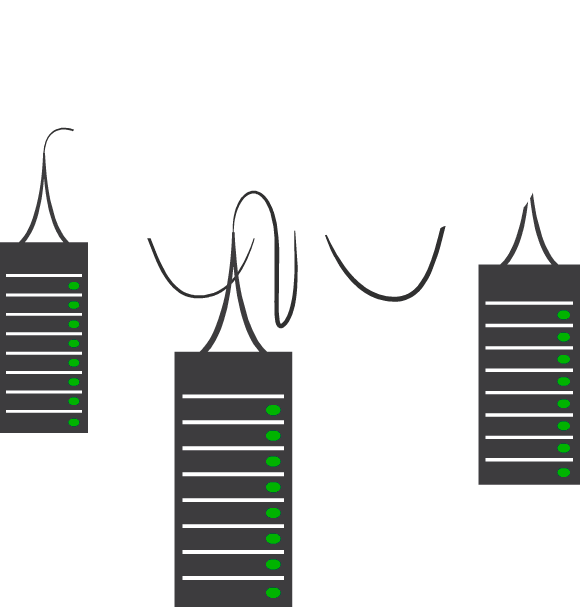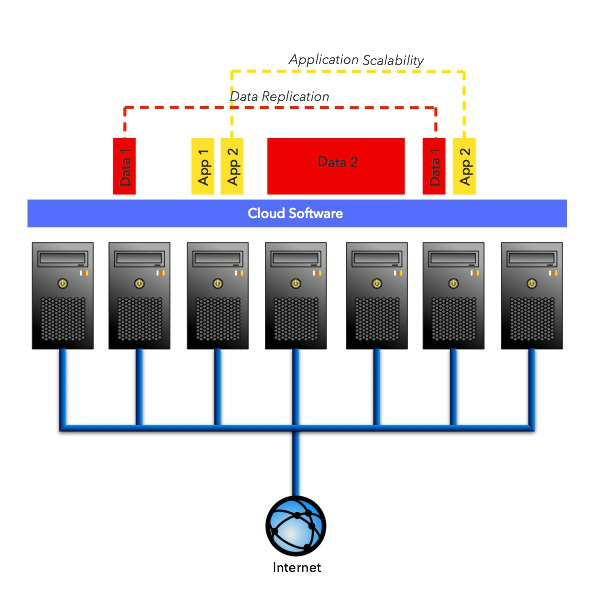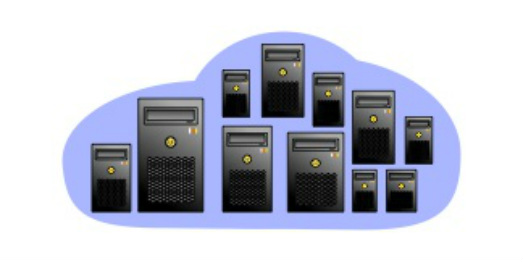CLOUD RE-DEFINED
Adam Thomas, Principle Solution Architect
| Redefined = define it again When most people hear the word redefined it usually associated with assigning a new meaning to an existing word, which may be the case if you've never heard of the term "cloud" as it applies to technology. However this article is really meant to refresh or go over the definition of what the cloud is again so that it becomes more familiar to people. |
Redefine, don't re-invent
At TOPHAT LTD we're not a big fan of re-inventing the wheel. In that spirit, the first part of this article encourages you to take a look at a piece Google put together that explains how an email moves through their cloud data centers. Now while Google may do some unique things like cool some of their data centers with sea water, the majority of what you see in this interactive story goes on at other companies' data centers around the world in a very similar fashion.
The Story of Send
The Anatomy of The Cloud
The cloud while it may seem mysterious is actually pretty simple except for one piece of magic. The cloud consists of a bunch of computers that are all connected together and also connected to the internet. The magic comes in the software that runs between the apps and data that live in the cloud and the computers that make up the cloud.
At TOPHAT LTD we're not a big fan of re-inventing the wheel. In that spirit, the first part of this article encourages you to take a look at a piece Google put together that explains how an email moves through their cloud data centers. Now while Google may do some unique things like cool some of their data centers with sea water, the majority of what you see in this interactive story goes on at other companies' data centers around the world in a very similar fashion.
The Story of Send
The Anatomy of The Cloud
The cloud while it may seem mysterious is actually pretty simple except for one piece of magic. The cloud consists of a bunch of computers that are all connected together and also connected to the internet. The magic comes in the software that runs between the apps and data that live in the cloud and the computers that make up the cloud.
One App to Many Computers --or-- Many Apps Sharing One Computer
On your home or office computer you're probably used to having to install a separate copy of each application on each computer. Also some applications such as web browsers like Internet Explorer can only have one version installed at a time. With the cloud, an application that normally would only be installed on one computer can utilize the processing resources of many computers. Likewise if there are apps like email mailboxes for small business that don't require the full processing power of a whole computer, other apps can share that computer with them.
Replication for Data & Scalability for Apps
One key feature that cloud software provides is the ability to easily duplicate or make copies of data and apps. For data this is important for providing redundancy in case one of the cloud computers would fail. It also makes it easy to keep snapshots or point-in-time backups of data in case future data gets corrupted. For apps this is important because the workload of the app can be physically spread out. This is important for apps that need to serve multiple geographical locations.
Pay Per Use
This flexibility of copying and moving data and apps around also provides flexibilty when it comes to paying for the service. In the past small businesses would have to invest in hardware (computers) and software (such as email server software) that was capable of handling thousands of users even though they had a much smaller number. With cloud technology, big companies can rent pieces of their cloud hardware and the apps running on them to small businesses for very reasonable rates. That way small business can pay for only what they use and not waste money on resources they won't ever need.
Why call it Cloud?
If you've made it this far and have a pretty good idea of what is behind the cloud, you may be wondering why it's called the cloud. When you think of a cloud in the sky, you probably know it's made of a lot of little water vapor droplets. When you look at a cloud you can't really tell how many droplets are there even though you know they are. That's the same with the cloud software mentioned above. When data or apps are living in the cloud they don't know how many computers are actually being used to host them. They just know that they are being stored or run on some computers in some datacenter connected to the internet. (Actually in many cases when you setup a cloud service you have some control over where things are hosted)
When does it make sense?
In most cases we recommend going with a hybrid cloud infrastructure. That means some apps and data are moved to the cloud and some stay on-site. There are several factors that we look at it when determining what to recommend moving to the cloud. Generally speaking if it's something that requires the internet to work such as email, then you might as well move it to the cloud. Or if it's something you're going to want to be able to use outside the office such as anti-virus protection for laptops on the go, then we recommended going with a cloud based solution. Other situations such as operations that deal with really large files or software that has special hardware or licensing requirements may make sense to continue hosting those on-site.
We at TOPHAT LTD work to find solutions that are the right fit for your business, and we offer up-front flat rate support for those solutions so you're not left wondering who you need to talk to if something goes wrong or just doesn't make sense. Hopefully this article has helped clear up some of the foggy ideas you may have had about the cloud. As always, if you have any questions, we're here to help.
Author: Adam Thoms, Co-Founder, TOPHAT LTD
In most cases we recommend going with a hybrid cloud infrastructure. That means some apps and data are moved to the cloud and some stay on-site. There are several factors that we look at it when determining what to recommend moving to the cloud. Generally speaking if it's something that requires the internet to work such as email, then you might as well move it to the cloud. Or if it's something you're going to want to be able to use outside the office such as anti-virus protection for laptops on the go, then we recommended going with a cloud based solution. Other situations such as operations that deal with really large files or software that has special hardware or licensing requirements may make sense to continue hosting those on-site.
We at TOPHAT LTD work to find solutions that are the right fit for your business, and we offer up-front flat rate support for those solutions so you're not left wondering who you need to talk to if something goes wrong or just doesn't make sense. Hopefully this article has helped clear up some of the foggy ideas you may have had about the cloud. As always, if you have any questions, we're here to help.
Author: Adam Thoms, Co-Founder, TOPHAT LTD




 RSS Feed
RSS Feed